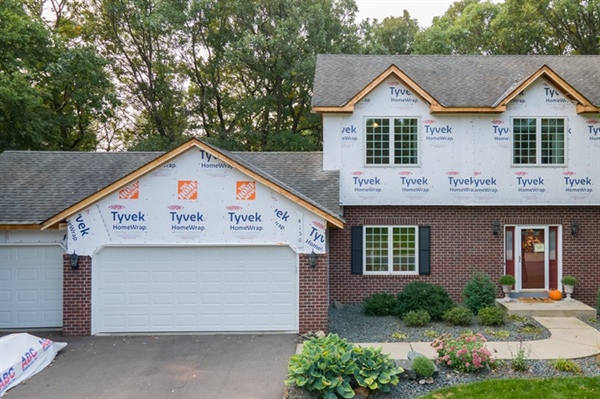How to Choose the Best Materials for Your Remodeling Project in Minnesota

We’ll explore key aspects to consider when choosing materials for your remodeling project. We’ll delve into topics like the pros and cons of natural versus synthetic materials, balancing cost and durability, selecting eco-friendly options, matching materials to your home’s architectural style, and addressing the specific challenges posed by Minnesota's weather conditions.
Choosing the right materials for your remodeling project is a critical decision that impacts both the aesthetics and functionality of your home. Whether you're updating a single room or undertaking a complete renovation, selecting materials requires careful consideration of factors such as durability, cost, style, and environmental impact.
Each material offers unique benefits and challenges, making it essential to align your choices with your project's goals and your personal preferences. Olson Construction & Remodeling, based in Oakdale, Minnesota, understands the importance of these decisions, offering expert guidance tailored to each homeowner's needs.
Whether you're planning an interior remodeling project or preparing for exterior updates, this guide will provide the insights you need to make informed decisions.
What are the pros & cons of natural vs. synthetic materials?
Natural materials like wood, stone, and marble offer timeless beauty and unmatched authenticity.
These materials are often valued for their unique appearance, as no two pieces are identical. However, natural materials can come with higher costs, require more maintenance, and may be less resistant to weather or wear than synthetic alternatives.
On the other hand, synthetic materials such as engineered wood, laminate, or composites are designed for durability and low maintenance.
They can mimic the look of natural materials at a lower price point and are often more resistant to stains, scratches, and environmental factors. However, they may lack the character and warmth associated with natural options, which can be a drawback for homeowners seeking an organic aesthetic.
Deciding between natural and synthetic materials involves weighing these pros and cons in the context of your specific remodeling goals. For instance, consider using natural stone for high-impact areas like kitchen countertops while opting for synthetic alternatives in high-traffic zones where durability is a priority.
How to balance cost & durability in material selection
Finding the right balance between cost and durability requires a strategic approach.
Start by identifying areas where durability is non-negotiable, such as floors in high-traffic areas or surfaces exposed to moisture. For these spaces, investing in durable materials like porcelain tile or quartz countertops can save money in the long run by reducing repair and replacement costs.
For less demanding areas, consider more cost-effective options that still align with your aesthetic goals. For example, luxury vinyl plank flooring provides the appearance of hardwood at a fraction of the cost and offers excellent durability.
Partnering with an experienced remodeling team can help you prioritize materials based on your budget and usage needs. Exploring options like exterior remodeling materials with a similar approach ensures long-term satisfaction and cost-effectiveness.
What are the most eco-friendly materials for home remodeling?
Eco-friendly materials are increasingly popular as homeowners prioritize sustainability.
Bamboo, cork, and reclaimed wood are excellent options for flooring, offering renewable and durable solutions. Recycled glass or composite countertops made from post-consumer materials also provide environmentally friendly choices without sacrificing style or functionality.
Incorporating energy-efficient materials like insulated windows, doors, and siding can further enhance your home’s eco-friendliness. These options reduce energy consumption and contribute to a more sustainable living environment.
When selecting eco-friendly materials, consider certifications such as LEED or FSC to ensure that your choices align with recognized environmental standards.
How to match materials with your home's architectural style
Achieving harmony between your chosen materials and your home's architectural style enhances its overall aesthetic appeal. For example, traditional homes may benefit from natural wood and stone accents, while contemporary designs often feature sleek materials like glass, steel, or concrete.
Consider consulting historical references or architectural guidelines specific to your home's design era. For example, a Craftsman-style home may incorporate stained wood and artisanal tiles, while a Mid-Century Modern property might emphasize minimalism and clean lines.
Balancing stylistic consistency with personal preferences ensures that your remodeled space feels cohesive and authentic.
How do Minnesota's weather conditions affect material choices?
In Minnesota, weather conditions like freezing temperatures, heavy snowfall, and humidity significantly impact material selection.
Exterior materials such as siding, roofing, and decking must withstand these challenges. Fiber cement siding, for instance, offers excellent durability and resistance to moisture, making it an ideal choice for Minnesota homes.
For interior spaces, thermal insulation and moisture resistance are critical. Materials like engineered wood or tile with underfloor heating can provide comfort and durability during cold winters.
Understanding local weather patterns and choosing materials accordingly ensures that your remodeling project stands the test of time in Minnesota’s demanding climate. For more information, please call us at 651-279-2590.